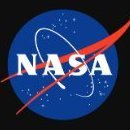Members Can Post Anonymously On This Site
Watch SpaceX Launch Research & Supplies to the International Space Station
-
Similar Topics
-
By Space Force
Secretary of the Air Force Troy Meink toured Mission Delta 3 (Electromagnetic Warfare) at Peterson Space Force Base, Colorado, May 28, 2025.
View the full article
-
By NASA
NASA/Bill Ingalls President Donald Trump speaks inside the Vehicle Assembly Building at NASA’s Kennedy Space Center in Florida, following the launch of NASA’s SpaceX Demo-2 mission on May 30, 2020. The mission was the first crewed launch of the SpaceX Crew Dragon spacecraft and Falcon 9 rocket to the International Space Station as part of the agency’s Commercial Crew Program. This marked the first time American astronauts launched on an American rocket from American soil to low-Earth orbit since the conclusion of the Space Shuttle Program in 2011.
Image credit: NASA/Bill Ingalls
View the full article
-
By NASA
NASA Teams responsible for preparing and launching Artemis II at NASA’s Kennedy Space Center in Florida are set to begin a series of integrated tests to get ready for the mission. With the upper stage of the agency’s SLS (Space Launch System) integrated with other elements of the rocket, engineers are set to start the tests to confirm rocket and ground systems are working and communicating as planned.
While similar to the integrated testing campaign conducted for NASA’s uncrewed Artemis I test flight, engineers have added tests ahead of Artemis II to prepare for NASA’s first crewed flight under the Artemis campaign – an approximately 10-day journey by four astronauts around the Moon and back. The mission is another step toward missions on the lunar surface and helping the agency prepare for future astronaut missions to Mars.
Interface Verification Testing
Verifies the functionality and interoperability of interfaces across elements and systems. Teams will conduct this test from the firing room in the Launch Control Center and perform health and status checks of various systems and interfaces between the SLS core stage, the solid rocket boosters, and the ground systems. It will ensure different systems, including core stage engines and booster thrust control, work as planned. Teams also will perform the same series of tests with the interim cryogenic propulsion stage and Orion before conducting a final interface test with all segments.
Program Specific Engineering Test
Teams will conduct separate engineering tests for the core stage, rocket boosters, and upper stage following the interface verification tests for each part of the rocket.
End-to-End Communications Testing
Integrated test of SLS core and upper stages, and Orion command and telemetry radio frequencies with mission control at NASA’s Johnson Space Center in Houston to demonstrate flight controllers’ ability to communicate with the ground systems and infrastructure. This test uses a radio frequency antenna in the Vehicle Assembly Building (VAB), another near the launch pad that will cover the first few minutes of launch, as well as a radio frequency that use the Tracking Data Relay Satellite and the Deep Space Network. Teams will do two versions of this test – one with the ground equipment communicating with a radio and telemetry station for checkouts, and one with all the hardware and equipment communicating with communications infrastructure like it will on launch day.
Countdown Demonstration Test
Teams will conduct a launch day demonstration with the Artemis II astronauts to test launch countdown procedures and make any final necessary adjustments ahead of launch. This test will be divided into two parts. The first will be conducted while SLS and Orion are in the VAB and include the Artemis II crew departing their crew quarters after suiting up at the Neil A. Armstrong Operations and Checkout Building and driving to the VAB where they will enter Orion like they will on launch day and practice getting strapped in. Part two will be completed once the rocket is at the launch pad and will allow the astronauts and Artemis launch team to practice how to use the emergency egress system, which would be used in the event of an unlikely emergency at the launch pad during launch countdown.
Flight Termination System End-to-End Test
Test to ensure the rocket’s flight termination system can be activated in the event of an emergency. For public safety, all rockets are required to have a flight termination system. This test will be divided into two parts inside the VAB. The first will take place ahead of Orion getting stacked atop SLS and the second will occur before the rocket and spacecraft roll out to the launch pad.
Wet Dress Rehearsal
Teams will practice loading cryogenic liquid propellant inside SLS once it’s at the launch pad and run through the launch countdown sequences just prior to engine ignition. The rehearsal will run the Artemis II launch team through operations to load liquid hydrogen and liquid oxygen into the rocket’s tanks, conduct a full launch countdown, demonstrate the ability to recycle the countdown clock, and also drain the tanks to give them an opportunity to practice the timelines and procedures they will use for launch.
Teams will load more than 700,000 gallons of cryogenic, or super cold, propellants into the rocket at the launch pad on the mobile launcher according to the detailed timeline they will use on the actual launch day. They will practice every phase of the countdown, including weather briefings, pre-planned holds in the countdown, conditioning and replenishing the propellants as needed, and validation checks. The Artemis II crew will not participate in the rehearsal.
View the full article
-
By NASA
3 min read
Preparations for Next Moonwalk Simulations Underway (and Underwater)
How do we do research in zero gravity?
Actually when astronauts do experiments on the International Space Station, for instance, to environment on organisms, that environment is actually technically called microgravity. That is, things feel weightless, but we’re still under the influence of Earth’s gravity.
Now, the very microgravity that we’re trying to study up there can make experiments actually really kind of difficult for a bunch of different reasons.
First of all, stuff floats. So losing things in the ISS is a very real possibility. For example,
there was a set of tomatoes that was harvested in 2022 put it in a bag and it floated away and we couldn’t find it for eight months.
So to prevent this kind of thing from happening, we use a lot of different methods, such as using enclosed experiment spaces like glove boxes and glove bags. We use a lot of Velcro to stick stuff to.
Another issue is bubbles in liquids. So, on Earth, bubbles float up, in space they don’t float up, they’ll interfere with optical measurements or stop up your microfluidics. So space experiment equipment often includes contraptions for stopping or blocking or trapping bubbles.
A third issue is convection. So on Earth, gravity drives a process of gas mixing called convection and that helps circulate air. But without that in microgravity we worry about some of our experimental organisms and whether they’re going to get the fresh air that they need. So we might do things like adding a fan to their habitat, or if we can’t, we’ll take their habitat and put it somewhere where there might already be a fan on the ISS or in a corridor where we think they are going to be a lot of astronauts moving around and circulating the air.
Yet another issue is the fact that a lot of the laboratory instruments we use on Earth are not designed for microgravity. So to ensure that gravity doesn’t play a factor in how they work, we might do experiments on the ground where we turn them on their side or upside down, or rotate them on a rotisserie to make sure that they keep working.
So, as you can tell, for every experiment that we do on the International Space Station, there’s a whole team of scientists on the ground that has spent years developing the experiment design. And so I guess the answer to how we do research in microgravity is with a lot of practice and preparation.
[END VIDEO TRANSCRIPT]
Full Episode List
Full YouTube Playlist
Share
Details
Last Updated May 28, 2025 Related Terms
ISS Research Biological & Physical Sciences International Space Station (ISS) Science & Research Science Mission Directorate Explore More
2 min read Summer Students Scan the Radio Skies with SunRISE
Solar radio bursts, intense blasts of radio emission associated with solar flares, can wreak havoc…
Article 58 mins ago 3 min read NASA Interns Conduct Aerospace Research in Microgravity
The NASA Science Activation program’s STEM (Science, Technology, Engineering, and Mathematics) Enhancement in Earth Science…
Article 19 hours ago 19 min read Summary of the 2024 SAGE III/ISS Meeting
Introduction The Stratospheric Aerosol and Gas Experiment (SAGE) III/International Space Station [SAGEIII/ISS] Science Team Meeting…
Article 2 days ago Keep Exploring Discover Related Topics
Missions
Humans in Space
Climate Change
Solar System
View the full article
-
-
Check out these Videos



Recommended Posts
Join the conversation
You can post now and register later. If you have an account, sign in now to post with your account.
Note: Your post will require moderator approval before it will be visible.